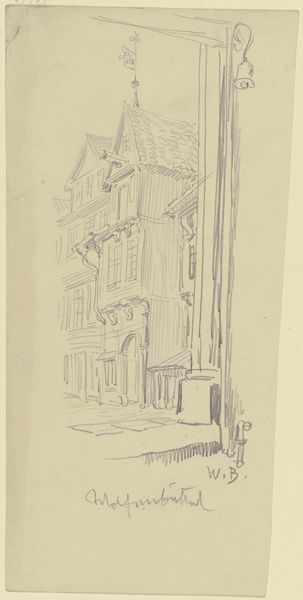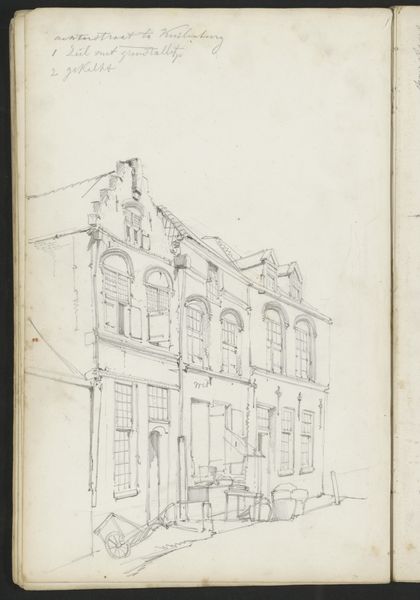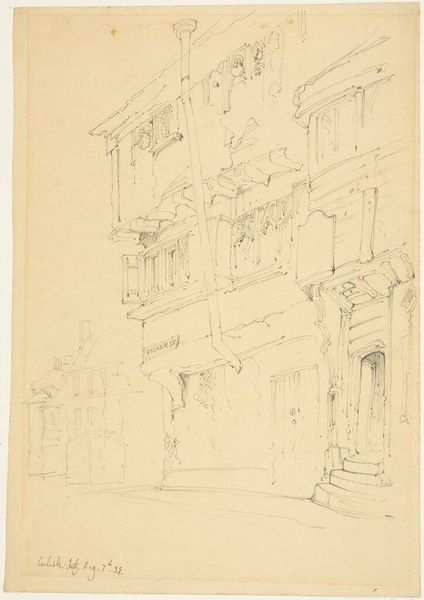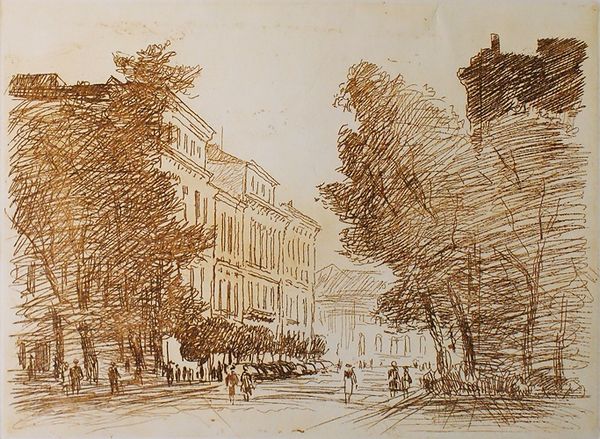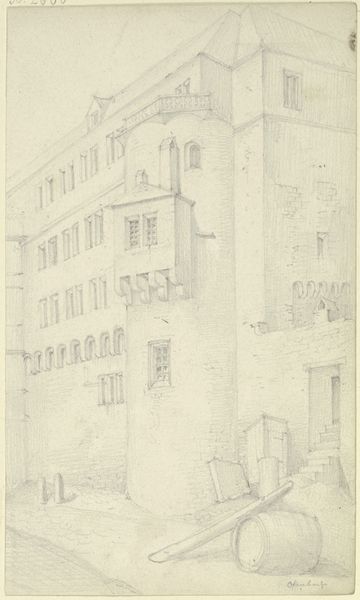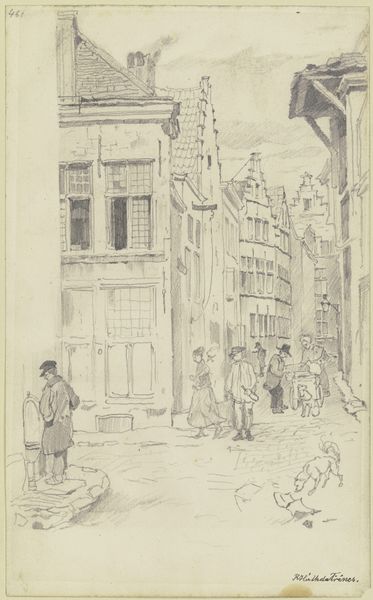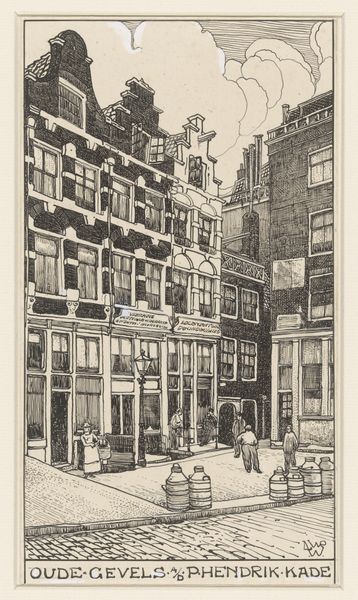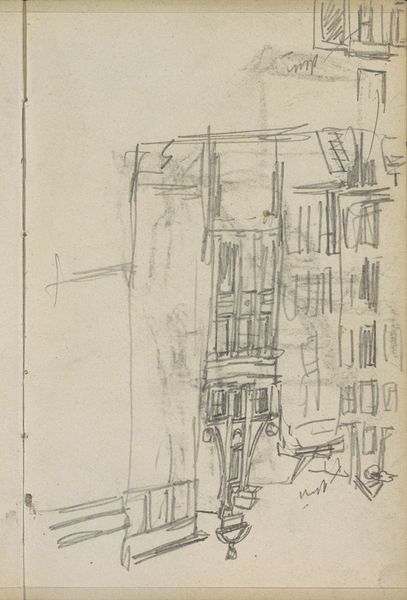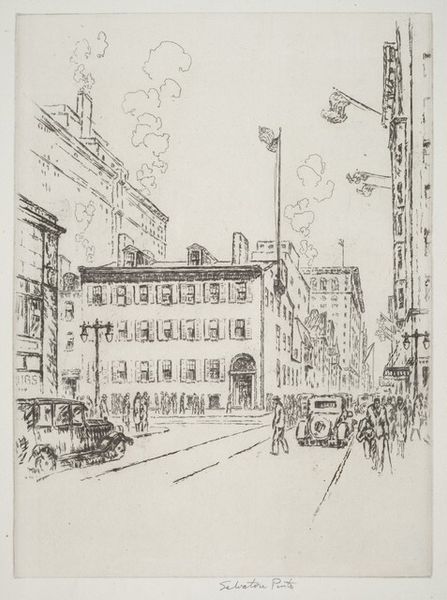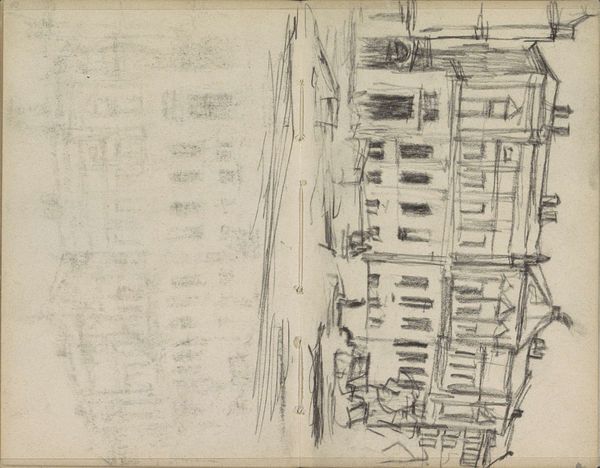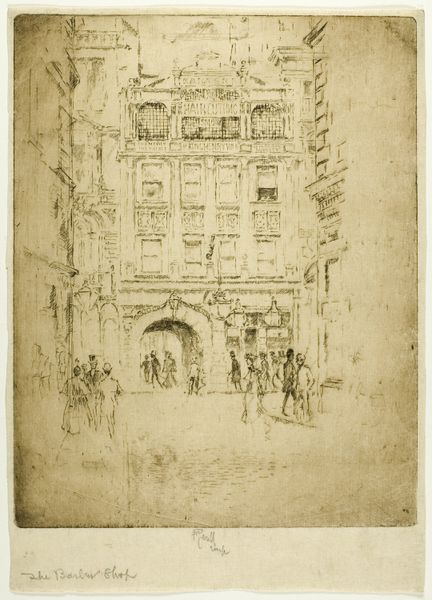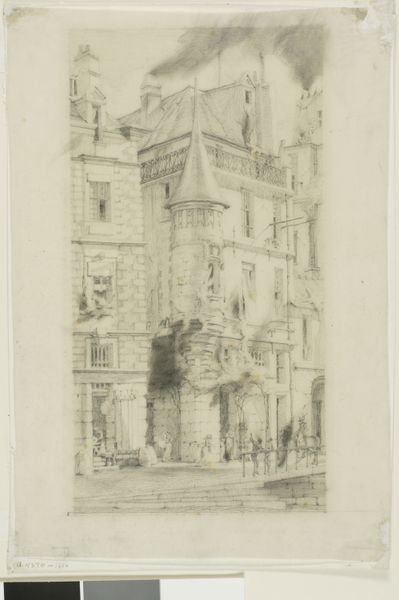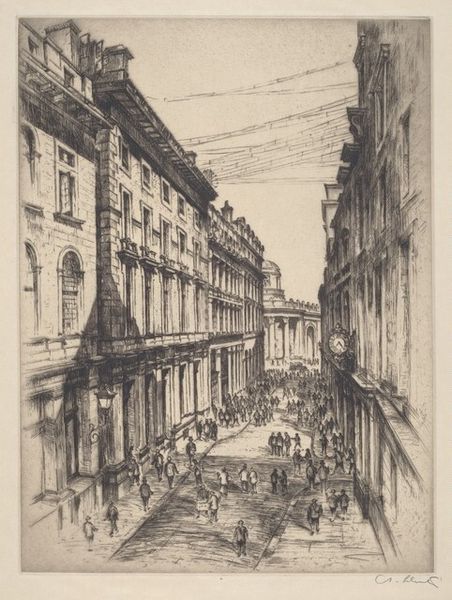
drawing, paper, pen
#
drawing
#
neoclacissism
#
landscape
#
etching
#
paper
#
pen
#
cityscape
Dimensions: height 386 mm, width 264 mm
Copyright: Rijks Museum: Open Domain
Curator: Hubert Robert sketched this cityscape sometime between 1743 and 1808. The artwork, created with pen, etching, and drawing on paper, offers us "Gedeelte van een gevel van het Louvre te Parijs" or "Part of a facade of the Louvre in Paris". Editor: Immediately, I’m struck by its ghostlike quality. The sepia tones, the light sketch lines, the figures that populate the street – they all give it a sense of a fading memory. Curator: It’s quite intriguing how Robert chose to depict the Louvre, a building synonymous with power and prestige, in such an understated way. We have to remember, of course, the Louvre’s function wasn't always exclusively a museum; understanding its socio-political role during the time period really sets the tone of Robert’s perspective. Editor: Absolutely. The image also speaks to ideas of power, architectural grandiosity and masculine aesthetics. We're left to ponder who occupies these spaces, what are the politics enacted behind these monumental structures, and how this impacts different identities across the socio-economic and racial spectra. Curator: Right. Robert seems interested in showing the everyday life unfolding around the grand architecture, softening its monumental impact, making a point about the people and not the establishment. It feels very political, perhaps subversive, almost an acknowledgement that buildings outlive the generations that they intend to serve, and instead belong to a wider public realm. Editor: I agree; it invites reflections on issues of class and labor. This intersection really humanizes what otherwise might be seen merely as stone and design. Robert offers us an avenue to deconstruct the social hierarchies materialized through architectural spaces. Curator: It is certainly a testament to art's ability to prompt reflections beyond the immediately visible. Editor: Indeed, an excellent example of how art history and contemporary theory can merge, offering space to reflect on power, memory, and identity.
Comments
No comments
Be the first to comment and join the conversation on the ultimate creative platform.
